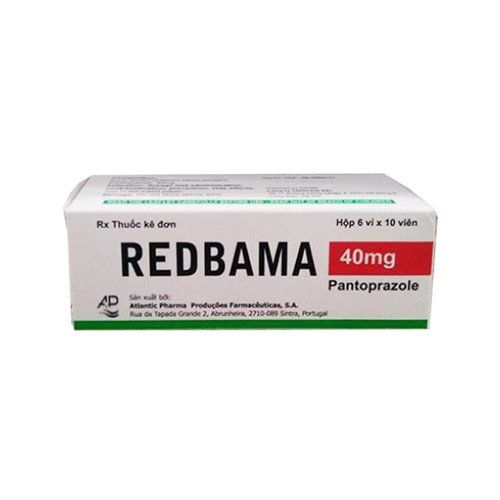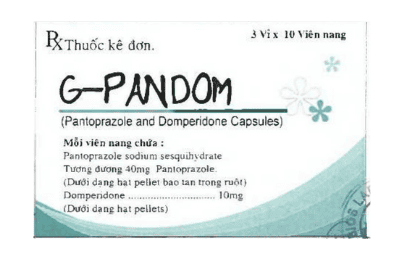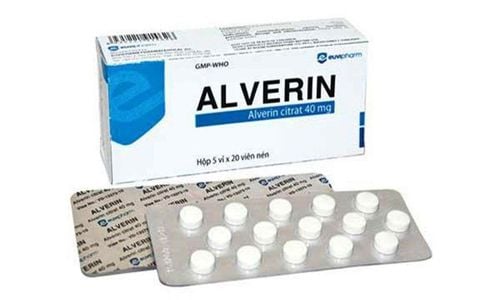This is an automatically translated article.
Ozanilin is a medicine to treat stomach diseases. For more detailed information about what disease Ozanilin treats? How to use? You can refer to the article below.1. Composition and dosage form of Ozanilin
Ingredients in Ozanilin include:
Pantoprazole: 40mg; Other sufficient excipients. Dosage form: Ozanilin is prepared in the form of lyophilized powder for injection.
2. Indications and uses of Ozanilin
Ozanilin is indicated in the following cases:
Peptic ulcer; Gastroesophageal reflux . Uses:
Active ingredient Pantoprazol is a selective proton pump inhibitor, a derivative of Benzimidazole. Ozaniline drug is rapidly absorbed from the gastrointestinal tract, is metabolised in the liver and has a half-life of 1.5 hours, excreted by the kidneys. Ozanilin has a specific and irreversible inhibitory effect on the proton pump due to its selective effect on the gastric cell wall, so it acts faster and more effectively than other drugs. The wound healing rate can reach 95% after 8 weeks of treatment. Ozanilin has little effect on gastric volume, pepsin secretion, gastric endogenous factor, and gastric contractility.
3. Dosage - How to take Ozanilin
How to use Ozanilin:
Ozanilin for slow intravenous injection: Mix a vial of lyophilized powder for injection with a concentration of 40mg with 10ml of 0.9% NaCl solution for slow intravenous injection for at least 2 minutes. Ozanilin for intravenous infusion: Mix a vial of 40mg lyophilized powder for injection with 100ml of Ringer lactate solution or 0.9% NaCl solution or 5% Dextran. Then administer intravenous infusion for about 15 minutes. Note:
Ozanilin solution should not be mixed or shared with other drugs. Ozanilin solution should be used within 12 hours of reconstitution and preferably immediately after reconstitution to ensure sterilization. Dosage of Ozanilin:
Dosage for patients with gastroesophageal reflux disease - oesophagitis, severe peptic ulcer: Daily dose of 40mg x 01 time/day. Dosage for patients with severe hepatic impairment: The maximum dose is 20mg/day or every other day with a dose of 40mg once. Dosage in patients with renal impairment: No dose adjustment is required. As soon as possible, switch from injection, intravenous to oral form to prolong the treatment time and achieve greater effectiveness.
4. Contraindications to the use of Ozanilin
Do not use Ozanilin in patients with allergic reactions or hypersensitivity reactions to any of the ingredients of the drug.
5. Ozanilin drug overdose
When overdosing on Ozanilin you may experience symptoms such as nausea, vomiting, abdominal pain, headache, digestive disorders and diarrhea, rash, itching,... However to ensure safety, You should notify your doctor for instructions on safe and proper handling.
6. Interactions when taking Ozanilin
During the use of Ozanilin, there may be interactions between drugs or between drugs and food or other health-protective foods. This will affect the effect and effectiveness of the drug, so to avoid adverse interactions, patients should provide their doctor with all prescription and non-prescription medications before taking Ozanilin. .
7. Side effects when taking Ozanilin
During the use of Ozanilin, patients may experience side effects such as:
Skin rash; Allergic reaction ; Anaphylaxis; Tired; Dizzy ; Headache; Diarrhea; Constipation. If the patient experiences any unpleasant symptoms while taking Ozanilin, notify the doctor immediately.
Ozanilin is a medicine for the treatment of gastric - duodenal ulcers, gastroesophageal reflux disease - oesophagitis. This is a prescription drug used only as prescribed by a doctor, patients absolutely do not use it on their own to avoid complications. If you have any questions regarding Ozanilin, please contact your doctor immediately for answers.













